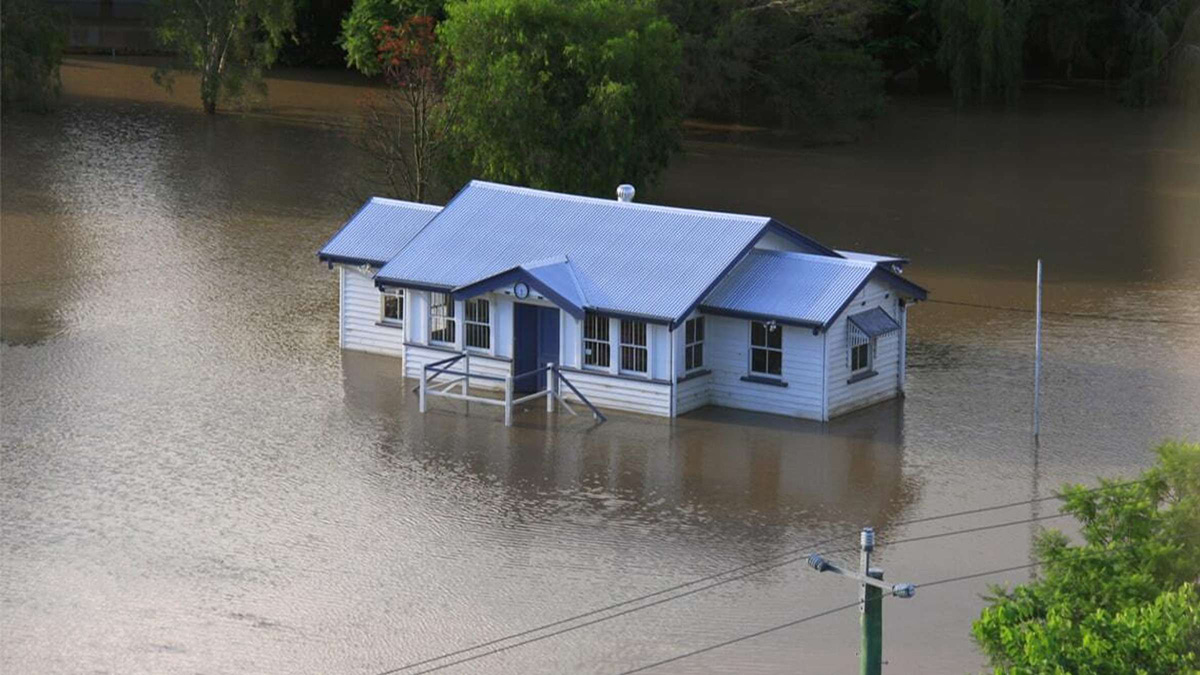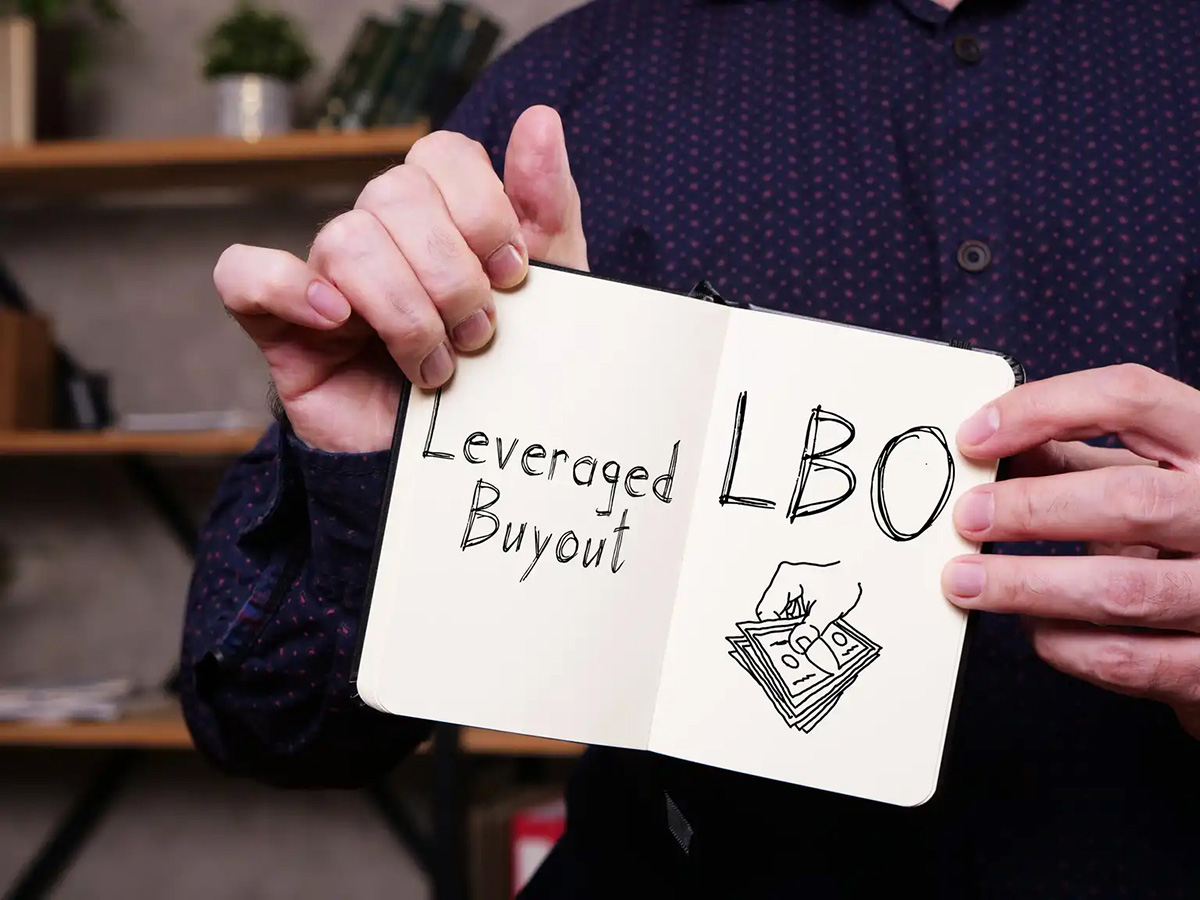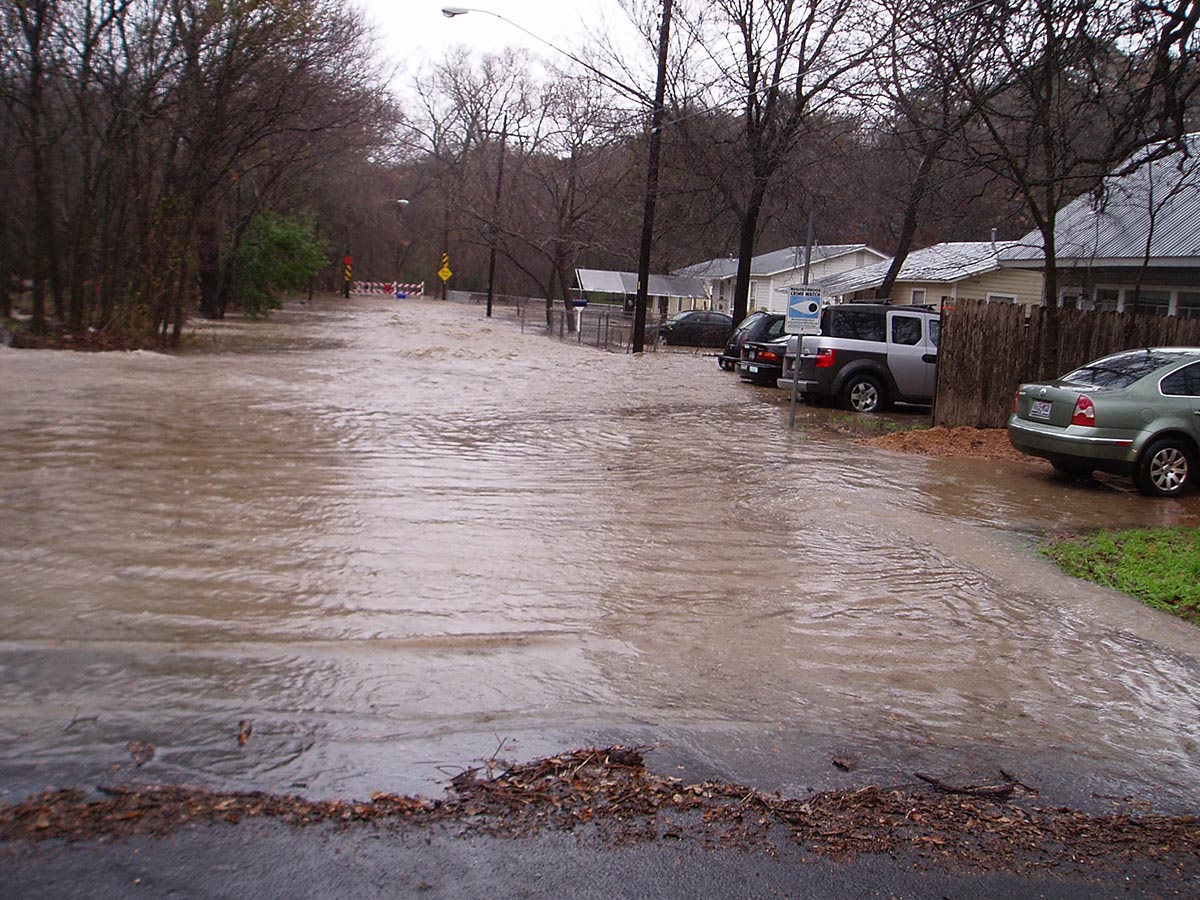

Finance
How Do Flood Buyouts Work
Modified: December 30, 2023
Explore the financial aspects of flood buyouts and understand how these processes work. Learn about the various financing options available for flood victims.
(Many of the links in this article redirect to a specific reviewed product. Your purchase of these products through affiliate links helps to generate commission for LiveWell, at no extra cost. Learn more)
Table of Contents
Introduction
In areas prone to flooding, the devastating impact on homes and communities is a constant threat. When traditional flood prevention measures, such as levees and dams, are insufficient to protect these areas, flood buyouts become a vital tool in mitigating the damage caused by repetitive flooding. Flood buyouts involve the voluntary purchase of flood-prone properties by government agencies or organizations, with the aim of removing the structures and returning the land to its natural or designated use.
The primary goal of flood buyouts is to reduce the vulnerability of communities to future flood events. By purchasing and removing flood-prone properties, governments can prevent further damage, protect public safety, and promote long-term resilience. These initiatives not only offer financial relief to homeowners but also contribute to broader efforts to manage and reduce flood risks.
Flood buyouts are typically based on a voluntary basis, giving homeowners the option to sell their property to the government or participating organization at a fair market value. While the decision to participate in a flood buyout is personal and can be an emotional one, it provides an opportunity for homeowners to move away from high-risk flood areas, avoiding the potential loss and disruption caused by future flooding.
In this article, we will explore the various aspects of flood buyouts, including the purpose, eligibility, application process, valuation, funding, buyout agreements, demolition and restoration, and environmental considerations. By understanding how flood buyouts work, homeowners and communities can make informed decisions and take proactive steps to mitigate flood risks and protect their well-being.
What are Flood Buyouts?
Flood buyouts, also known as floodplain acquisitions or property acquisitions, refer to the process of purchasing flood-prone properties from willing homeowners or landowners by government agencies or organizations. The aim is to remove these structures from flood-prone areas and restore the land to its natural or designated use.
When a property is located within a floodplain, it is at a high risk of being damaged or destroyed by flood events. Flood buyouts offer homeowners an opportunity to voluntarily sell their property to the government or a participating organization at fair market value. By participating in a buyout, homeowners can avoid the financial burden and emotional toll of recurrent flooding, while also contributing to community resilience.
While flood buyouts are commonly associated with major flooding events, they can also be implemented as a proactive measure in areas prone to frequent flooding. By strategically acquiring flood-prone properties, governments can reduce the potential for future property damage, protect public safety, and restore floodplain areas to their natural functions.
Flood buyouts offer multiple benefits. For homeowners, it provides an exit strategy from properties that may no longer be viable due to frequent flooding. By selling their property to the government or participating organization, homeowners can receive fair compensation, which can help them relocate to a safer area and start anew. It also alleviates the burden of potential flood-related expenses, such as repairs, insurance premiums, and rising property values.
At a community level, flood buyouts help reduce the risk and costs associated with flood damage. By removing structures from flood-prone areas, governments can minimize the need for emergency response, rescue operations, and post-flood recovery efforts. This allows for a more efficient allocation of resources to support affected individuals and communities.
Flood buyouts can also contribute to environmental benefits. Restoring floodplain areas to their natural state allows for the recovery and preservation of critical ecosystems. The removal of structures in flood-prone areas can improve the overall health and functionality of rivers, streams, and wetlands, providing habitat for wildlife and enhancing water quality.
Overall, flood buyouts are an effective strategy in mitigating the impacts of flooding and promoting community resilience. They offer homeowners an opportunity to move away from high-risk areas, provide compensation, reduce the financial burden on individuals and communities, and restore floodplain areas to their natural state.
Purpose of Flood Buyouts
The purpose of flood buyouts is to mitigate the devastating impact of flooding on homes, communities, and the environment. By strategically purchasing flood-prone properties, government agencies or participating organizations aim to achieve the following objectives:
1. Risk Reduction: The primary purpose of flood buyouts is to reduce the vulnerability of communities to future flood events. By acquiring flood-prone properties, the risk of property damage and loss of life due to flooding is minimized. This proactive approach helps to protect both homeowners and the broader community from the devastating consequences of repetitive flooding.
2. Public Safety: Flood buyouts prioritize public safety by removing people from high-risk flood areas. By relocating homeowners to safer locations, the chances of injury or loss of life during flood events are greatly reduced. This not only safeguards individuals and families but also lessens the burden on emergency response teams and resources.
3. Long-Term Resilience: Flood buyouts contribute to the long-term resilience of communities. By removing structures from flood-prone areas, governments can ensure that these areas can no longer be developed or inhabited. This helps to prevent future occupants from experiencing the financial and emotional toll of recurrent flooding, promoting safer and more resilient communities.
4. Environmental Protection: Flood buyouts often involve the restoration of floodplain areas to their natural or designated use. Once structures are removed, these areas can be reestablished as critical ecosystems, such as wetlands or natural waterways. Restoring the natural functionality of floodplain areas enhances biodiversity, improves water quality, and provides habitat for wildlife.
5. Cost Savings: While flood buyouts require an upfront investment, they can result in significant cost savings in the long run. By preventing future flood damage, governments can minimize the need for emergency response, cleanup, and rehabilitation costs. The monetary burden on individuals, businesses, and public resources is reduced, allowing for more efficient allocation of funds.
6. Respect Landowner Choice: Flood buyouts operate on a voluntary basis, respecting homeowners’ choices and decisions. By offering fair market value for their properties, homeowners have the opportunity to make informed decisions about their future. This voluntary nature ensures that flood buyouts are an equitable and inclusive process for all parties involved.
Overall, the purpose of flood buyouts is to reduce flood risk, protect public safety, promote long-term resilience, restore natural environments, save costs, and respect landowner choices. By implementing these strategies, communities can better prepare for and mitigate the impacts of flooding, fostering safer and more sustainable living environments.
Eligibility for Flood Buyouts
The eligibility criteria for participating in flood buyouts can vary depending on the specific program and funding sources. While the requirements can differ, there are some common factors that determine the eligibility of homeowners for flood buyouts:
1. Location: The property must be located within a designated floodplain or an area deemed at high risk of flooding. This is typically determined by floodplain maps created by local government or federal agencies. Properties situated in flood-prone areas are more likely to be eligible for buyout programs.
2. Frequency of Flooding: The property should have a history of repetitive flooding. This means that the property has experienced multiple instances of flood damage over a period of time. The frequency and severity of flood events are considered when assessing eligibility for flood buyouts.
3. Severity of Damage: The property must have suffered significant flood damage to qualify for a buyout. The extent of the damage is determined through property inspections and assessments conducted by qualified professionals. The severity of the damage helps prioritize the properties based on the level of risk and potential for future damage.
4. Voluntary Participation: Participation in flood buyouts is typically voluntary. Homeowners must willingly agree to sell their property to the government or participating organization at an agreed-upon fair market value. Governments cannot force homeowners to participate in a buyout program.
5. Property Ownership: Homeowners must have legal ownership and all necessary documentation for the property they wish to sell. Only the owner of the property can enter into a buyout agreement. If there are multiple owners, all parties must be in agreement and provide their consent for the buyout.
6. Compliance with Program Guidelines: Homeowners must meet the specific requirements set by the flood buyout program they are applying for. These guidelines may include deadlines for applications, required documentation, and adherence to program rules and regulations.
It is important to note that eligibility for flood buyouts can vary depending on the funding source and program. Some programs may prioritize certain demographics, such as low-income households or properties located in critical flood zones. It’s crucial for homeowners to research and understand the eligibility criteria specific to their area and the corresponding flood buyout program.
Additionally, it’s worth mentioning that even if a homeowner meets the eligibility criteria, it does not guarantee acceptance into a flood buyout program. The availability of funds, prioritization of properties, and other factors may influence the final decision.
By understanding the eligibility requirements for flood buyouts, homeowners can determine if they qualify for participation and make informed decisions about their flood-risk properties.
Application Process
The application process for flood buyouts typically involves several steps that homeowners must follow to be considered for participation. While the exact process may vary depending on the specific program and jurisdiction, here are the general steps involved in applying for a flood buyout:
1. Research and Information Gathering: Homeowners should start by researching the available flood buyout programs in their area. This includes identifying the government agencies or organizations that administer the programs, understanding the eligibility criteria, and obtaining any program guidelines or application forms.
2. Contact the Relevant Authorities: Once homeowners have gathered the necessary information, they should reach out to the appropriate government agency or participating organization responsible for flood buyouts. This can be the local municipality, county government, state agency, or federal entity in charge of managing flood buyout programs.
3. Submit an Application: Homeowners must complete and submit an application form provided by the relevant authorities. The application form typically requires information about the property, including its location, ownership details, history of flooding, and extent of flood damage. It may also ask for documentation such as property deeds, insurance records, and photos of flood damage.
4. Assessment and Evaluation: Once the application is submitted, it undergoes an assessment and evaluation process. This involves property inspections, flood risk analysis, and the determination of the property’s eligibility for buyouts. Qualified professionals may conduct inspections to verify the extent of flood damage and assess the property’s overall suitability for a buyout.
5. Notification of Acceptance: If the application is accepted, homeowners will be notified of their inclusion in the flood buyout program. The notification will include details about the offer, which typically includes the fair market value of the property based on an appraisal and other relevant factors. Homeowners have the option to accept or decline the buyout offer.
6. Negotiation and Buyout Agreement: If homeowners choose to accept the buyout offer, they will enter into negotiations with the government agency or organization responsible for the program. This involves finalizing the terms and conditions of the buyout, including the purchase price, relocation assistance, and any other provisions outlined in the buyout agreement. Legal representatives may be involved in this process to ensure the protection of homeowners’ rights.
7. Property Transfer and Demolition: Once the buyout agreement is reached, the property ownership is transferred to the government agency or organization. The homeowners will then have a specific timeframe to vacate the property and arrange for relocation. Subsequently, the government agency or organization will proceed with the demolition of the structures on the acquired property.
8. Restoration of the Land: Following the demolition, the land will be restored to its natural state or designated use to mitigate future flood risks. This may involve removing debris, restoring vegetation, or implementing other flood management measures as per the guidelines and environmental considerations.
It’s important for homeowners to note that the application process for flood buyouts can be complex and time-consuming. It’s advisable to seek guidance from local authorities or consultants who specialize in flood mitigation and buyout programs to ensure a smooth and successful application process.
By following these steps and engaging with the relevant authorities, homeowners can navigate the application process and move forward with a flood buyout, if eligible. Participating in a buyout program can help homeowners mitigate the risks associated with flooding and create safer and more resilient communities.
Valuation of Properties
The valuation of properties is a crucial aspect of the flood buyout process. It involves determining the fair market value of the property that homeowners will receive as compensation for participating in the buyout program. The valuation process ensures that homeowners are fairly compensated for their flood-prone properties. Here are the key factors involved in valuing properties for flood buyouts:
1. Appraisal: An appraisal is typically conducted by a qualified appraiser to assess the value of the property. Appraisers consider various factors such as the property’s location, size, condition, age, and any recent improvements. They also consider comparable sales in the area to determine the fair market value of the property.
2. Flood Damage Assessment: The extent of flood damage inflicted on the property is an important factor in determining its value. Professionals may conduct inspections and assessments to evaluate the level of damage, including structural, electrical, or other significant impairments caused by flooding. The severity of the flood damage can lower the value of the property.
3. Market Conditions: Market conditions, including supply and demand dynamics in the local real estate market, are taken into account during the valuation process. Factors such as recent sales of similar properties in flood-prone areas and the overall desirability of the location can impact the property’s value.
4. Future Flood Risk: The likelihood of future flooding is considered when valuing flood-prone properties. Properties located in areas with a higher flood risk may have a lower value due to potential future damage and increased insurance costs.
5. Relocation Costs: The costs associated with relocating homeowners to safer areas are also taken into consideration. This may include expenses such as moving costs, finding alternative housing, and other relocation-related expenses. These costs are factored into the property’s valuation to ensure homeowners can afford to move after participating in the buyout program.
6. Social and Economic Factors: Valuation may also take into account social and economic factors such as the impact of the flood-prone property on the surrounding community and the potential cost savings for the government in terms of future flood damage mitigation.
It’s important to note that the valuation process can vary depending on the specific program, jurisdiction, and funding sources. Some programs may have set formulas or guidelines for valuing properties, while others may involve negotiations between homeowners and the acquiring agency.
Transparency and fairness in the valuation process are critical to ensure that homeowners receive a fair market value for their properties. Independent appraisers and qualified professionals assist in making an impartial assessment of the property’s value, considering the unique circumstances and characteristics of each flood-prone property.
By accurately valuing flood-prone properties, homeowners can make informed decisions about participating in flood buyout programs and receive appropriate compensation to facilitate their relocation to safer areas.
Funding for Flood Buyouts
Funding for flood buyouts comes from various sources, including federal, state, and local government agencies, as well as non-profit organizations. These funds are dedicated to supporting the acquisition and removal of flood-prone properties to reduce the impact of flooding on communities. Here are some common sources of funding for flood buyouts:
1. Federal Grants: The Federal Emergency Management Agency (FEMA) provides funding for flood buyout programs through various grant programs. These grants, such as the Hazard Mitigation Assistance (HMA) program, aim to support eligible communities in reducing their vulnerability to flood risks. FEMA funds can be utilized to acquire flood-prone properties and cover associated costs, including appraisals, inspections, and property demolitions.
2. State and Local Government Funding: State-level governments may allocate funding to support flood buyout programs within their jurisdictions. These funds may come from state budgets or be obtained through grants from federal agencies. Local governments, such as counties or municipalities, may also contribute funding to support buyout initiatives. These funds can be used to supplement federal grants and ensure the success of local flood buyout programs.
3. Housing and Urban Development (HUD) Programs: HUD offers funding opportunities, such as the Community Development Block Grant (CDBG) program, which can be utilized for flood buyouts. CDBG funds are primarily allocated to state and local governments to support community development initiatives, including the acquisition and removal of flood-prone properties.
4. Non-Profit Organizations: Non-profit organizations, such as environmental groups or foundations, may provide financial support for flood buyouts. These organizations often partner with local communities or government agencies to secure additional funding and resources. They may offer grants or fundraising assistance to supplement existing funds for buyout programs.
5. Private Funding and Partnerships: In some cases, private funding sources may contribute to flood buyout programs. This can include donations from individuals, businesses, or philanthropic organizations with an interest in supporting flood mitigation and community resilience. Public-private partnerships may also be formed to secure additional funding and expertise for buyout initiatives.
6. Flood Insurance Programs: Flood insurance programs, such as the National Flood Insurance Program (NFIP), play a role in funding flood buyouts. Following a major flood event, insurance claims and payouts can help finance the acquisition and removal of flood-prone properties. The NFIP, administered by FEMA, offers insurance coverage for properties located in flood-prone areas.
It’s important to note that the availability and amount of funding for flood buyouts can vary depending on several factors, including the severity of flooding in the region, the priorities of funding agencies, and the overall budgetary constraints.
Local governments and communities interested in pursuing flood buyouts should proactively seek information about available funding sources and guidelines. They can work with their respective government agencies, non-profit organizations, and other stakeholders to explore funding opportunities and develop comprehensive funding plans.
By securing appropriate funding, communities can effectively implement flood buyout programs, acquire flood-prone properties, and support homeowners in transitioning to safer areas, ultimately reducing their vulnerability to future flood events.
Buyout Agreement
The buyout agreement is a legally binding contract between homeowners and the government agency or participating organization involved in the flood buyout program. This agreement outlines the terms and conditions of the buyout, ensuring that all parties involved understand their rights, responsibilities, and obligations. Here are the key components typically included in a buyout agreement:
1. Purchase Price: The buyout agreement specifies the purchase price for the property, which is determined through the valuation process. This includes the fair market value of the property based on appraisals and other factors considered during the valuation process.
2. Terms of Payment: The agreement outlines the payment terms and schedule. It specifies how and when the payment will be made to the homeowners upon the completion of the buyout process. Payments may be made in a lump sum or in installments, depending on the terms agreed upon.
3. Relocation Assistance: The buyout agreement may include provisions for relocation assistance. This can include financial support to help homeowners with the costs associated with moving to a new location. The agreement may also outline any additional assistance or resources available to homeowners to facilitate a smooth transition.
4. Transfer of Ownership: The agreement contains details on the transfer of ownership of the property from the homeowners to the government agency or participating organization. It outlines the legal process and timelines for completing the transfer.
5. Release of Liability: The agreement may include a provision that releases the government agency or participating organization from any future liability associated with the property or flood-related damages. This protects the acquiring entity from any claims or disputes after the buyout is completed.
6. Conditions and Requirements: The buyout agreement may include conditions and requirements that both parties must fulfill. This may include provisions such as the need for homeowners to vacate the property within a specific timeframe, maintaining the property until the transfer of ownership, or adhering to any environmental regulations or restrictions.
7. Dispute Resolution: The agreement may outline the process for resolving any disputes that may arise between the homeowners and the acquiring entity. This can include the use of mediation or arbitration to address any disagreements in a fair and timely manner.
8. Confidentiality: Some buyout agreements may include a confidentiality clause to protect sensitive information or privacy concerns of both parties involved. This ensures that any personal or confidential information shared during the buyout process remains secure.
It is essential for homeowners to carefully review the buyout agreement and seek legal counsel if necessary to understand the terms and implications of the agreement. By doing so, homeowners can ensure that their rights are protected and any questions or concerns are addressed before entering into the agreement.
Government agencies and participating organizations also have a responsibility to provide clear and transparent information to homeowners throughout the buyout process. This helps establish trust and ensures that all parties involved understand the terms and conditions of the buyout.
By defining the rights and obligations of both homeowners and the acquiring entity, the buyout agreement provides a framework for a smooth and successful transition. It sets the stage for homeowners to receive fair compensation and the acquiring entity to acquire and transform flood-prone properties, ultimately enhancing community resilience.
Property Demolition and Restoration
After the completion of the flood buyout process, property demolition and restoration activities take place to remove the structures from flood-prone areas and restore the land to its natural or designated use. These activities are essential for mitigating future flood risks and promoting community resilience. Here are the key aspects of property demolition and restoration in flood buyout programs:
1. Demolition Process: Once the homeowners have vacated the property and ownership has been transferred to the acquiring entity, the demolition process begins. Demolition can involve the complete removal of the structures on the property, including houses, buildings, and any other infrastructure present. Depending on the program, the demolition may be carried out by the acquiring entity or contracted to a professional demolition company.
2. Environmental Considerations: Before initiating the demolition process, environmental considerations are taken into account. This includes assessing potential environmental hazards such as asbestos, lead paint, or other contaminants that may be present in the structures. Proper protocols are followed to safely remove and dispose of any hazardous materials in accordance with local regulations.
3. Site Restoration: After the structures are demolished, the site undergoes restoration to return it to its natural or designated state. This can involve removing debris and restoring the land to its pre-existing condition or implementing specific restoration plans based on environmental guidelines. Restoration activities may include regrading the land, planting native vegetation, restoring wetlands, or creating natural floodplain storage areas.
4. Stormwater Management: In some cases, the restoration process includes implementing stormwater management measures. This can involve the creation of retention ponds, swales, or other drainage features to improve water flow and prevent future flooding. These measures contribute to reducing the volume and velocity of runoff, minimizing flood risks in the area.
5. Community Engagement: Engaging and involving the local community is crucial during the property demolition and restoration phase. The acquiring entity may hold meetings or consultations with community members to provide updates on the progress and seek input on the future use of the land. This helps build community support and ensures that the restoration aligns with the community’s needs and aspirations.
6. Monitoring and Maintenance: After the restoration is complete, ongoing monitoring and maintenance efforts may be necessary to ensure the effectiveness of the restoration measures. This includes regular inspections, vegetation management, and the implementation of erosion control measures to prevent any degradation of the land over time.
It’s important to note that the property demolition and restoration process can take time and may vary depending on the size and complexity of the acquired properties. Proper planning, coordination, and adherence to environmental regulations are essential to ensure that the restoration activities are carried out effectively and sustainably.
By demolishing flood-prone structures and restoring the land, the flood buyout program helps mitigate future flooding risks, protect public safety, and contribute to the long-term resilience of communities. The restoration of the land to its natural state or a designated use enhances environmental quality, provides habitat for wildlife, and supports the overall health and functionality of the surrounding ecosystem.
Environmental Considerations
Environmental considerations play a vital role in flood buyout programs to ensure that the acquisition and restoration of flood-prone properties are conducted in an environmentally sustainable manner. These considerations address potential environmental impacts and seek to minimize any negative effects on natural habitats, water resources, and overall ecosystem health. Here are key aspects of environmental considerations in flood buyout programs:
1. Habitat Preservation: Before initiating the buyout process, assessing the ecological value of the property is essential. Properties located within or adjacent to important habitats, such as wetlands or wildlife corridors, may require special attention and conservation measures. Protecting and preserving such habitats helps maintain biodiversity and supports the overall health of the ecosystem.
2. Endangered Species and Sensitive Areas: Identification of endangered or threatened species and the presence of environmentally sensitive areas are critical considerations. Evaluating potential impacts on these species or habitats and implementing protective measures is necessary to mitigate negative environmental consequences. Consultation with environmental agencies and experts can help ensure compliance with relevant regulations and guidelines.
3. Water Quality Preservation: The restoration of flood-prone properties should take into account the preservation of water quality. Implementing erosion control measures, such as stabilizing slopes and using vegetative buffers along waterways, helps prevent sediment and pollutants from entering rivers, lakes, and other water bodies. Proper management of stormwater runoff is crucial to maintain water quality and prevent the degradation of aquatic ecosystems.
4. Floodplain Functionality: Consideration should be given to maintaining the functionality of floodplain areas. Preserving natural floodplain storage capacity helps attenuate floodwaters, reduce peak flows, and minimize flood risks downstream. Restoring and enhancing floodplain ecosystems can improve water infiltration, groundwater recharge, and nutrient cycling, benefiting both terrestrial and aquatic ecosystems.
5. Conservation and Restoration Strategies: Integration of conservation and restoration strategies is important to maximize the environmental benefits of the buyout program. Replanting native vegetation, creating green spaces, and restoring wetlands are examples of measures that can enhance ecosystem resilience and provide habitat for wildlife. These strategies contribute to the ecological integrity of the area and foster the reestablishment of natural processes.
6. Adherence to Environmental Regulations: Compliance with local, state, and federal environmental regulations is crucial to ensure that all necessary permits, studies, and assessments are conducted. Appropriate environmental impact assessments, including evaluations of potential pollution sources and impacts on protected species, should be accomplished to address potential environmental risks and ensure compliance with regulatory requirements.
7. Education and Outreach: Educating homeowners, communities, and stakeholders about the environmental benefits of flood buyout programs is essential. Raising awareness about the connection between floodplain preservation, ecosystem health, and community resilience can foster a sense of stewardship and encourage sustainable land management practices.
By considering these environmental factors, flood buyout programs can help protect and restore ecosystems, maintain water quality, preserve biodiversity, and enhance the overall ecological resilience of the area. A comprehensive and environmentally conscious approach ensures that flood mitigation efforts not only address immediate flood risks but also contribute to the long-term sustainability and health of natural environments.
Conclusion
Flood buyouts serve as an essential tool in mitigating the impact of flooding on homes, communities, and the environment. By voluntarily purchasing flood-prone properties, governments and participating organizations can reduce flood risks, protect public safety, and promote long-term resilience of communities. Throughout this article, we have explored various aspects of flood buyouts, including their purpose, eligibility criteria, application process, property valuation, funding sources, buyout agreements, property demolition, restoration, and environmental considerations.
Flood buyouts offer homeowners an opportunity to move away from high-risk flood areas, providing financial relief and helping them avoid potential future flood damage. These programs also support community resilience by removing structures that are repeatedly affected by floods, reducing the need for emergency response, and minimizing long-term financial burdens on individuals and public resources.
Engaging in a transparent and inclusive application process ensures that homeowners understand the requirements and benefits of participating in flood buyouts. The fair valuation of properties allows homeowners to receive appropriate compensation for their flood-prone properties, enabling them to relocate to safer areas and start anew.
Funding from various sources, such as federal grants, state and local government budgets, non-profit organizations, and private partnerships, supports the implementation of flood buyout programs. Access to these funds ensures the successful acquisition and removal of flood-prone properties, supporting community resilience and flood risk reduction efforts.
The buyout agreement, a legally binding contract, outlines the terms and conditions of the buyout, including the purchase price, payment terms, relocation assistance, and transfer of property ownership. Clear communication and understanding of the terms of the agreement are critical for all parties involved.
Following the buyout, property demolition and restoration activities remove structures from flood-prone areas and restore the land to its natural or designated state. Environmental considerations play a crucial role, safeguarding habitats, preserving water quality, and maintaining the functional integrity of floodplains, ultimately promoting ecological resilience.
In conclusion, flood buyouts offer a comprehensive approach to mitigating flood risks, protecting homeowners, and enhancing community resilience. By implementing these programs, we can create safer, more sustainable, and environmentally conscious communities that are better prepared to withstand future flooding.














